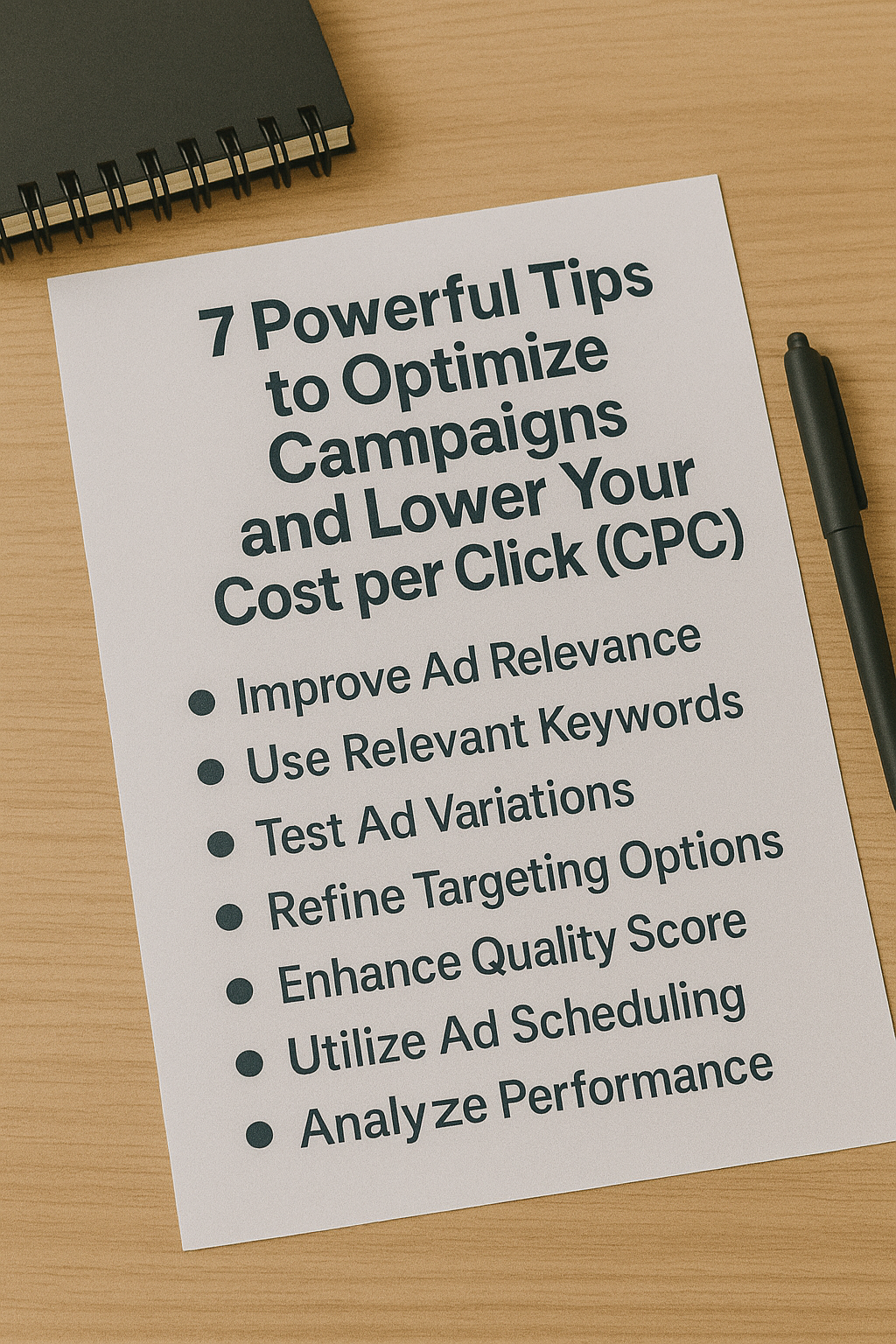Whether you’re working with Facebook Ads, Google Ads, or another platform, Cost per Click (CPC) is one of the most important metrics for any traffic manager. A high CPC can burn through your budget quickly, while a lower CPC allows you to get more traffic, more leads, and more conversions for the same spend.
In this article, you’ll learn 7 practical and proven tips to lower your CPC and improve your campaign efficiency—without sacrificing quality.
1. Improve Your Ad Relevance Score or Quality Score
Both Meta and Google use a relevance or quality score system to evaluate how well your ads match the audience and search intent. A low score = higher CPC. A high score = lower CPC and better placement.
How to improve it:
- Write ad copy that speaks directly to the audience’s problem or desire
- Use keywords in your ad text (Google) or match interests (Meta)
- Make sure your landing page content matches the ad
- Use high-quality, engaging visuals
Better alignment = better score = cheaper clicks.
2. Use More Specific Targeting
One of the biggest reasons CPCs rise is poor targeting. If your audience is too broad, you’ll pay more to reach people who aren’t interested.
What to do:
- Use niche interest targeting instead of generic ones
- Create custom audiences (like past buyers, video viewers, email list)
- Use lookalike audiences built from high-quality data sources
- Split test multiple audiences to find the most responsive segment
Specific targeting reduces waste—and that brings down your cost per click.
3. Test and Refresh Creatives Frequently
Ad fatigue is real. If you keep running the same ad creative, performance drops—and CPC goes up. Platforms penalize stale ads by reducing delivery or raising costs.
Action steps:
- Test at least 2–3 creatives per ad set
- Use a mix of formats: video, single image, carousel, story, etc.
- Refresh your creative every 1–2 weeks in active campaigns
- Analyze which formats drive the lowest CPC and iterate from there
More engaging creatives = more clicks = better CPC.
4. Optimize Your Bidding Strategy
Bidding directly affects CPC. On Meta Ads, you usually let the algorithm optimize for results (like conversions), but you can test manual bidding strategies in more advanced phases.
On Google Ads:
- Use manual CPC with enhanced bidding if you want more control
- Try Target ROAS or Maximize Clicks for automated strategies
- Reduce bids for keywords or placements with low performance
- Adjust bids based on device, location, or time of day
Sometimes, just a smart bid adjustment can lower your CPC by 20–40%.
5. Run A/B Tests on Your Ad Copy and Headlines
Your ad’s copy and headline are often the first things that affect whether someone clicks. Small changes here can make a big difference in CPC.
Try testing:
- Questions vs. statements (e.g., “Tired of Wasting Ad Budget?”)
- Emotional triggers (e.g., fear of loss, urgency, curiosity)
- Numbers or stats in headlines (e.g., “3 Ways to Boost ROI Fast”)
- Short vs. long-form text
Use platform split-testing tools or manually A/B test in separate ad sets.
6. Narrow Your Placement Strategy (When Needed)
Broad placement is great for discovery, but not always cost-effective. If CPC is too high, you may want to focus your ads only where they perform best.
On Meta:
- Test separating placements (Feed, Stories, Reels, Audience Network)
- Look at breakdown reports to find high-performing spots
- Turn off placements with low CTR and high CPC
On Google:
- Exclude poor-performing display network placements
- Use placement reports to find sites that generate bad clicks
- Stick to Search if display isn’t profitable for your goal
Remember: quality placements mean higher engagement and lower costs.
7. Improve Your Landing Page Experience
The ad click is just the beginning. If users land on a slow, messy, or irrelevant page, platforms will penalize your ad with higher CPC—especially on Google Ads.
To fix this:
- Make sure your page loads in under 3 seconds
- Optimize for mobile (where most users are clicking from)
- Match the ad message to the page headline and offer
- Keep forms short and CTAs clear
- Add trust elements: testimonials, badges, contact info
A better user experience = higher conversion rate AND lower CPC.
Bonus Tip: Retargeting = Lower CPC and Higher ROI
Retargeting audiences (people who already engaged with you) almost always have lower CPCs and higher conversion rates than cold audiences.
Retarget:
- Website visitors
- Cart abandoners
- Lead magnet downloaders
- Video viewers or page engagers
Set a lower daily budget for retargeting and let it work in the background—it’s your most efficient ad spend.
Final Thoughts: Cut Costs Without Cutting Performance
Lowering your CPC doesn’t mean lowering your standards. With the right approach, you can get better results for less money.
Here’s a quick recap:
- Improve your ad quality and targeting
- Test creatives and headlines regularly
- Refine placements and bidding
- Create a better user experience
- Use retargeting to your advantage
As a traffic manager, your ability to control CPC while maintaining ROI is what sets you apart. Keep testing, stay sharp, and always optimize based on data—not assumptions.

